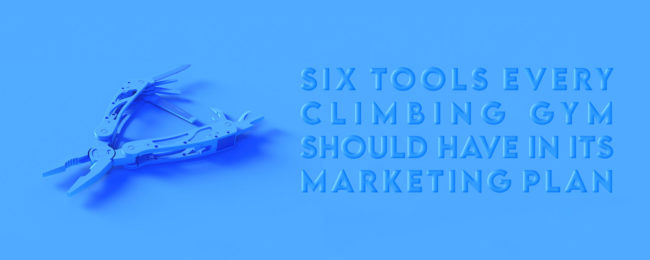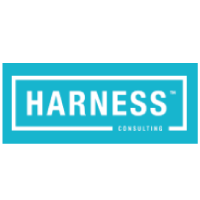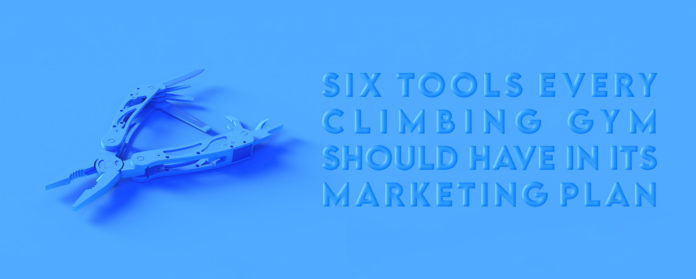
You’ve built the most excellent climbing gym in the area. Now what? How will you get people to come? Or tell people about its existence, at the very least? Do you know what you need to market? If you don’t, here’s your answer: routesetting is ultimately your service. But even if you offer the best climbing routes in the world, it won’t matter if the gym down the street is getting all the foot traffic.
Now more than ever, in a growing industry with increasing competition, marketing is one of the most crucial facets of running a climbing gym business and not just a secondary concern to focus on when sales are down. Second to being a company that provides the experience of climbing, you are a marketing company. Yes, you read that correctly.
Leading business owners/marketers know that a climbing business is only as successful as its marketing strategies. Don’t get us wrong. Marketing climbing gyms can be complicated given their nuanced point-of-sale software, large potential markets with numerous segments, and limited resources/bandwidth in most organizations. But, if you choose the right mix of campaigns and methodologies, you can move people to climb and, most importantly, become committed community members.
Below is a list of strategies a climbing gym can implement to find success in the industry. It would be best to use all of them, but we understand most gyms don’t have the capacity or resources to do that, so pick and choose one or a few that would make sense for your gym. Either way, you are already doing something that will contribute to the success of your business.

1. Search Engine Optimization (SEO)
SEO may not be a new, ground-breaking marketing method, but it is still one of the most effective tools. Arguably, search engines are the most critical channels for climbing gym marketing success. They are incredibly effective in creating online traffic. Research shows that website visitors from organic searches stay onsite longer, make purchases more often, and typically have larger average order values. That means businesses must optimize their web content to appear in online search results.
Many free tools inform marketers which search terms online prospects use in their queries. We can optimize site pages and content for those terms along with related terms, increasing qualified traffic. More qualified traffic means more sales. Furthermore, increased website traffic generally yields more check-ins. In our experience, there is nearly a one-to-one correlation between website visitors and gym check-ins.
One of the biggest tips we can offer marketers is to determine which pieces of content, such as blog articles, on their website are most successful on search engines. Then, go back to those pages and completely optimize them so that every potential hit from search engines is squeezed out of each piece.

2. Storytelling
You have worked hard to create a strong community in the gym. Shouldn’t your digital experience reflect that community focus by immersing visitors in the world you strive to create? Everyone has a story, and it helps to tell yours in an engaging way. Some great examples of storytelling include:
Visual Content
New visitors who have just entered your marketing funnel (i.e., awareness stage visitors) are first trying to solve the issue that brought them to the internet in the first place. Such issues can include seeking entertainment and diversion, looking for a new workout plan, or finding an alternative sport for their kids who aren’t interested in “ball sports.” At this stage, focus your efforts on creating value through education. Visual content is perfect for that purpose.
Creating easily-consumed visual content, such as graphics and videos that tell a bite-size story on social media, is an excellent way to attract new awareness stage visitors to your site. Once they are there, you can establish a relationship with additional content that will encourage them to stay onsite and get to the decision stage where purchases occur.
Testimonials
Instead of doing all the narrating yourself, in the next stage share the stories others have been telling about your business through testimonials. They are also called “social proof.” According to the latest surveys, 92% of consumers read online reviews and testimonials when considering a purchase. Social proof establishes credibility and demonstrates the authenticity of a brand.
Make it a point to respond to all reviews and always be the nice guy. Take the negative reviews as an opportunity by turning that reviewer into a brand advocate. If they are passionate enough to write a bad review, they can be as passionate about your brand if you can change their mind.

3. Conversion Rate Optimization (CRO)
You have attracted a visitor to your site. How will you ensure that you have removed all of the obstacles to your prospect becoming a customer? That is what conversion rate optimization is—optimizing your website to increase the percentage of visitors that take the desired action. These actions include making a purchase, joining your email list, or signing up for an event.
You can calculate the conversion rate by dividing the number of desired actions in a given period (conversions) by the number of visitors to your site.
CRO is one of the most important facets of marketing because it doesn’t matter how many visitors you can attract to your site if the percentage of people who make a purchase is consistently low. All efforts in building your audience are moot if visitors don’t take action.
CRO includes: reducing checkout steps, decreasing load times, and ensuring your mobile site priority because many, or even most, of your visitors nowadays are using mobile devices to view your site. You can employ the scientific method to start your CRO strategy:
Form a Hypothesis
Is the current call-to-action on your homepage “Sign Our Waiver”? How successful has that button been in creating new customers? By keeping that as your primary call to action, your hypothesis is: The waiver is the most essential website aspect that most visitors are searching for, so it needs to be front and center on your homepage.
It may help to consider your segmentation. Most of your visitors likely haven’t climbed before. The broad majority probably seek answers to concerns that all new climbers share. Will the waiver answer those questions or create more concerns? The first thing you are asking your new visitors to do is agree not to hold you liable if they get injured in your facility.
Test It
You can perform an A/B test on your site to test your hypothesis. Using any of the numerous testing software tools available, you can create two or more versions of your homepage: one with your waiver call-to-action (CTA) and at least one with another variation of the button, perhaps offering a discount on an introductory class.
Allow the software to randomly split new traffic to your site until you have a statistically significant number of visitors to determine which variant is the winner.
You can take this method further by testing website copy, button colors, images and more. You can even use a heat mapping software that analyzes each website visit to determine which of your website elements receive the most interaction and track users’ scroll depth. That will quickly illustrate what works and what doesn’t. The results might even surprise you.

4. Customer-Centric Content
Gathering evidence doesn’t stop at website testing. Instead of the old “spaghetti at the wall” strategy, you can use additional data to further drive your creative decisions and guide your content strategy. What makes your audience unique? How can you create content that best answers their questions and solves their problems?
A solid analytics setup and consistently tracking key performance indicators (KPIs) on each of your pieces of content will allow you to get the most out of your content marketing.
Another way to do that is working with your front desk team to find out the most frequently asked questions and most common complaints from clients. Once you understand these pain points, you can cater your customer experience to suit your customers’ needs, both in the gym and digitally.

5. Personalized Customer Experience
When it comes to gathering statistics to improve customer experiences, the options are endless. For starters, you can use your waiver to gather information about customers by adding optional questions. Then, use that data to create segments—high-level views of your customers who share self-identified demographics, personality traits, concerns, and experience levels. A good starting point is to divide them into beginner, intermediate and advanced climber segments.
You can also go beyond your waiver to gather data by using surveys, quizzes and website event tracking to see how individual customers interact with your online content. For example, suppose someone frequently visits articles about outdoor climbing and has taken a trad class. In that case, they are likely a more advanced climber interested in outdoor courses and articles about trad climbing. If you added a line of trad shoes to your retail store, use the opportunity to let this climber (and a segment they belong to) know with a segment-specific email.
You can further customize your visitors’ web experiences with dynamic website content that’s displayed to specific individuals based on certain triggers and behaviors. First, your team develops cohorts based on identifiers such as life cycle stage, member vs. non-member, or climbing ability/level of interest. Next, your website visitors are grouped based on those factors using software to automate the process. Now your marketing team can curate content for each of those groups, so that each person receives the correct information at the right time based on other self-identifying traits, such as blogs engaged with, pages visited, etc.
When done right, you can set up the website experience to be less impersonal and more user-defined. Users can experience your brand to best serve them in the way they need, showing your guests that you genuinely understand them. And everyone wants to be understood.

6. User-Generated Content
Without realizing it, most people seek out user-generated content (UGC) when making a purchase decision. User-generated content consists of items such as photos, videos, testimonials, blog posts and other media generated by patrons. Like reviews, people want to see themselves, or a proxy of themselves, using a product or service before purchasing. In fact, 79% of people tap UGC to make such decisions.
Not sure where to start? First, determine your overall content strategy and ways your members would like to contribute meaningful content or already are. Then, figure out how to tie in your community so that they have ownership in the campaign. By including them in the process, they will be more likely to promote the campaign to friends and family, further generating interest through word-of-mouth marketing (still one of the most effective ways to grow a business).
You will need to get permission from your visitors before using the content they create, even if they made it in your gym. Copyright laws apply here, so always err on the side of caution. You can also incentivize and gamify user content generation with photo contests, meme contests and more. The sky is the limit, so get creative. That’s the fun part of marketing after all!
The most important thing about climbing gym marketing is that the strategies suggested above are not tactics to quickly get one-time customers and boost sales in the short term. These strategies aim to attain long-term goals of building your gym membership and community together. If implemented well, these tools—as part of a comprehensive marketing plan that involves your whole team—can create sustainable growth, help climbers become lifelong members, and gather advocates for your brand who are psyched to pursue your mission with you.

HARNESS is a full-service digital marketing agency based in Salt Lake City, with customers worldwide. We have worked in the climbing industry since 2015 and are unique in focusing specifically on the needs of climbing gyms. We help our customers build a digital platform that reflects their gym community. Have questions or want to talk shop? Come see us at the CWA Summit, or give us a call at (800) 681-5440 and check out our work at www.harnessconsulting.com.







